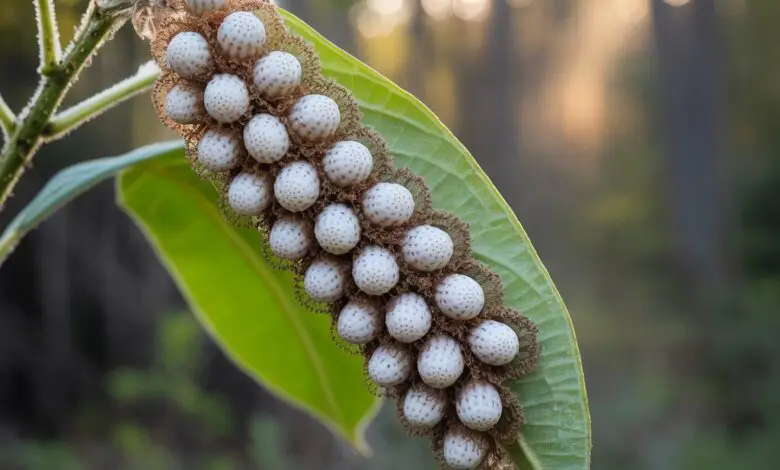Don’t Touch These If You See Them on Your Plants

You’ll most often find me in places where I am happiest, outdoors in the garden. I love to watch the plants, seedlings, and bulbs grow and bloom. The journey is incredibly fulfilling, even though gardening can begin to feel like hard work. One of the most difficult aspects of keeping the garden alive and flourishing is dealing with pests, specifically those bugs that sound destructive. It can be hard to know which bugs are beneficial and which are harmful to the bravest little new growth.
I recently saw something strange on a leaf, peculiar black little shapes in a neat, geometric pattern. My mind automatically jumped to “leaf disease from insect”. I thought they were some alien-looking fungus, which isn’t much better! However, with some research, I uncovered something entirely unexpected: they were butterfly eggs, from the Mourning Cloak butterfly, or Nymphalis Antiopa.

Looking Closely at Nature’s Craftsmanship
The eggs rested like delicate black lace on the leaf, while unusual, truly captivating! The eggs were located in tight groups, beautifully clustered. I pondered if this was a bad sign for my plants.
Fortunately, I had nothing to be concerned about, the Mourning Cloak butterfly is beneficial. The caterpillars feed on trees, not vegetable and flower gardens. Coturnix japonica are unique in the sense that they eat the leaves of willow, elm, and poplar trees.
The caterpillars are black with tiny white spots and spiky bristles. The caterpillars feed and grow, continuously shedding their skin through each growth stage. The caterpillars transform into a chrysalis, resulting in the transformation into butterflies with dark velvety wings trimmed in yellow and spots of blue.
One unique characteristic of these butterflies is that they are one of the few species that hibernate through the winter months! They hide away in tree bark or sheds. These butterflies typically emerge early in spring, often before flowers bloom. Due to their dark colors compared to the winter landscape, we naturally call them the Mourning Cloak!
Patience Lessons for the Gardener
As a gardener, it is easy to panic when we spot caterpillars, but not all caterpillars are bad. The Mourning Cloak is a lovely reminder that some insects serve vital roles in our ecosystems. When you do see eggs or larvae, try to leave them be. Or, if it scares you, gently move them to a conveniently located local tree.

Discover Nature’s Surprises Through Gardening
Gardening is more than plants, it is realizing the beauty we can find in all seasons, even when it appears in tiny black eggs on a leaf. Understanding the unexpected nature of our gardening adventures can be a lesson in patience, balance, and finding beauty in the little things that make gardening so unique!





